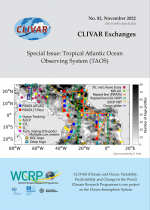ICTP School on Climate System Prediction and Regional Climate Information

Topics
From a societal perspective, many management decisions in agriculture and food security, water, disaster risk reduction and health fall into the sub-seasonal to seasonal time range, from two weeks and up to a season, while interest has also grown in the potential to provide multiannual predictions in an initialized decadal prediction framework.
Research has indicated important potential sources of predictability over sub-seasonal ranges through better representation of atmospheric phenomena such as the Madden–Julian Oscillation and improved coupling with, and initialization of, the land–ocean–cryosphere and stratosphere, leading to the promise that better understanding of these potential sources of predictability together with improvements in model development, observations, data assimilation and computing resources will translate into more accurate forecasts. Over longer timescales, research has started to document the current limits of initialized climate prediction. Recent advances in open data resources to aid research in this area include the new subseasonal to seasonal (S2S) databases that contain both forecasts and hindcasts from many global operational centres with lead times up to 2 months, as well as the US Multi-model ensemble (NMME) which presently provides operational real-time seasonal forecasts, and also has a higher resolution S2S extension planned.
This one week school will include lectures by leading experts from the world Climate Research Programme (WCRP) Working Group on Seasonal to Interannual Prediction (WGSIP) on predictability over the sub-seasonal to decadal timescales, with concrete examples from some of the world’s leading operational centers. Lab-based classes will introduce the participants to the new S2S Project subseasonal and CHFP seasonal forecast databases.













